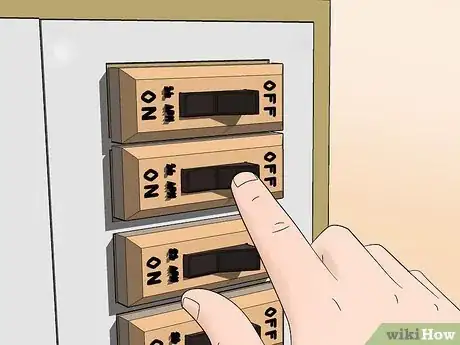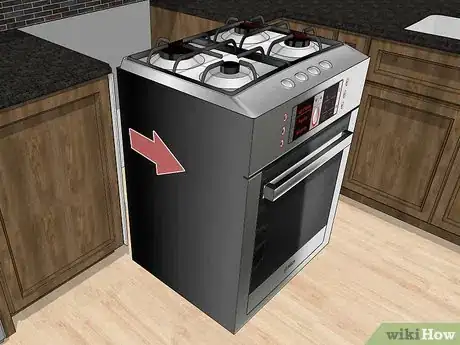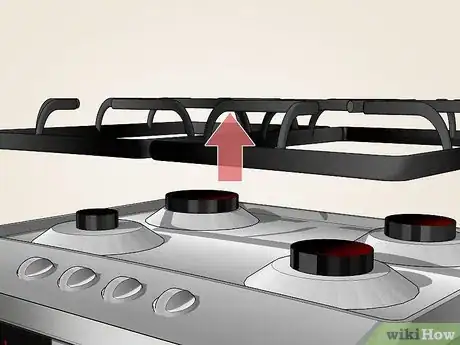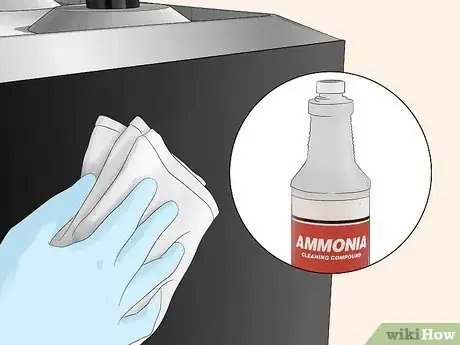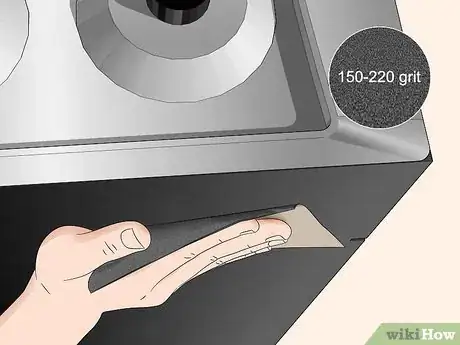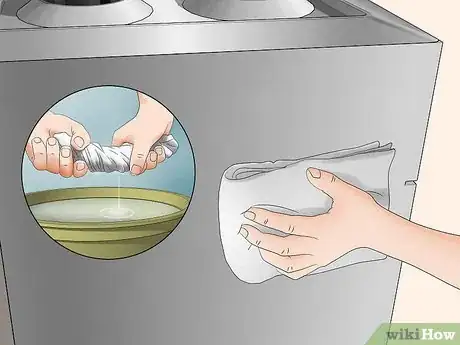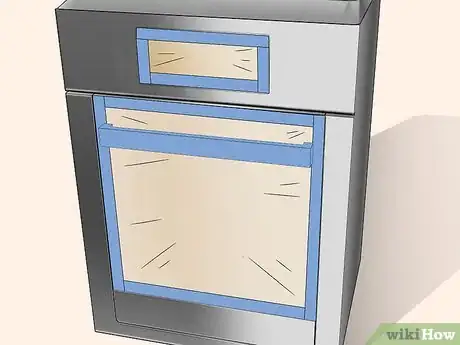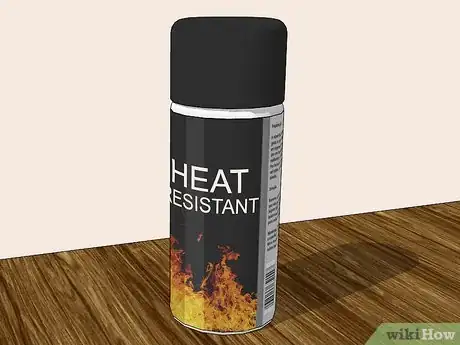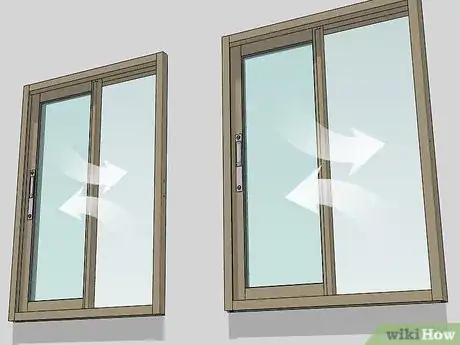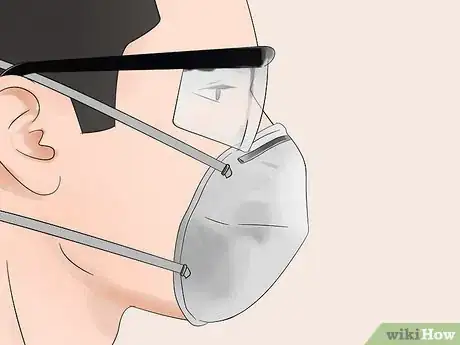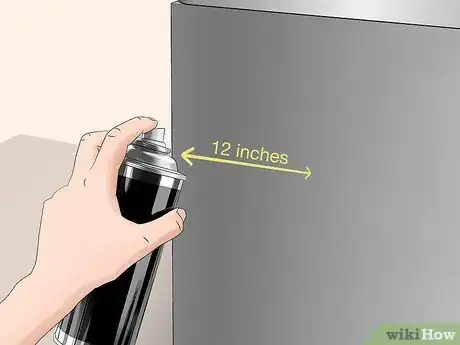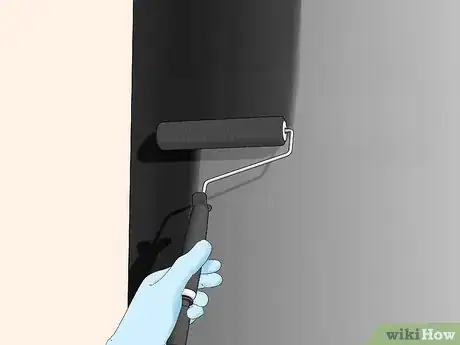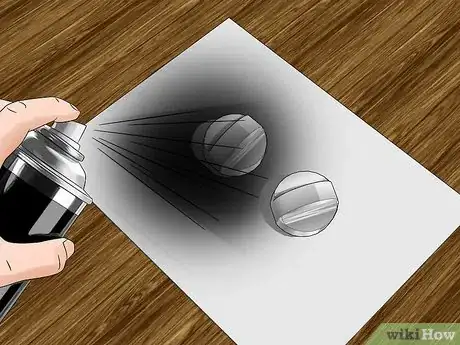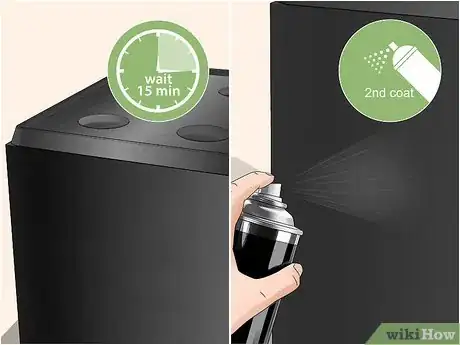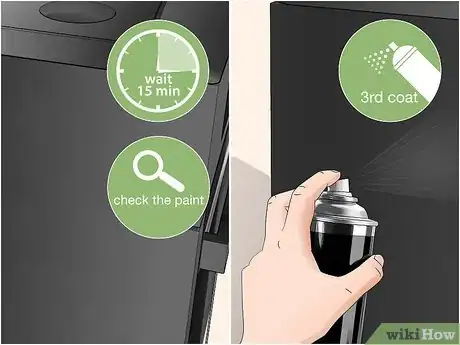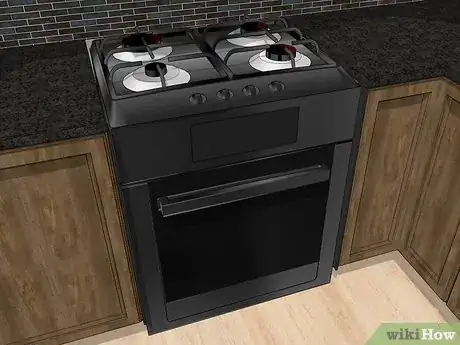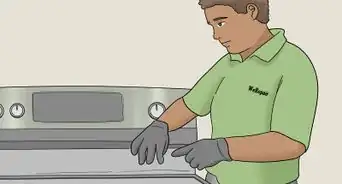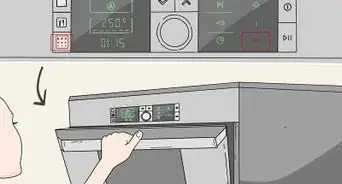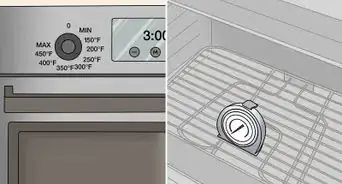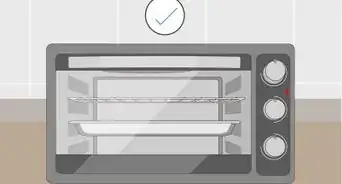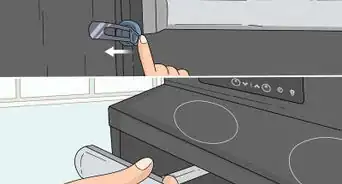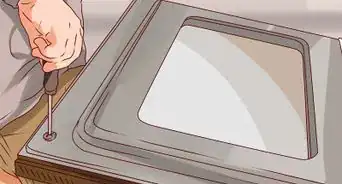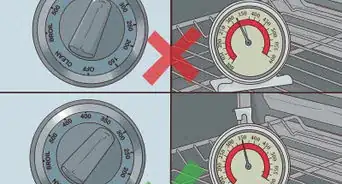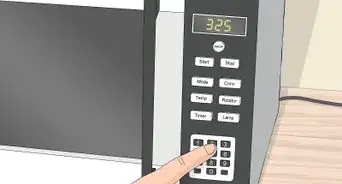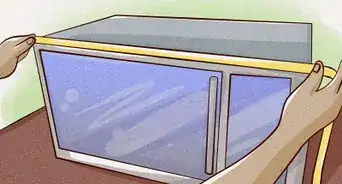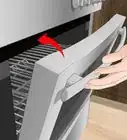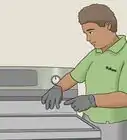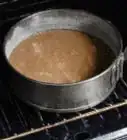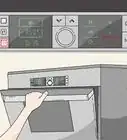This article was co-authored by Andres Matheu. Andres Matheu is the Owner of Hömm Certified Painting Systems, an Interior and Exterior Residential painting business based in the Washington, DC Metro area. Andres specializes in interior and exterior residential painting, color consultations, cabinet refinishing, wallpaper removal, and epoxy flooring among other services. An EPA Lead-safe Certified Firm, Hömm Certified Painting Systems has been awarded the Best of Houzz 2019 Service, Angie's List Super Service Award 2019, and Northern Virginia Magazine's 2018 Best Home Experts (painters) award.
There are 8 references cited in this article, which can be found at the bottom of the page.
This article has been viewed 16,537 times.
Over time, your oven can start looking dull and worn from many years of use. A new coat of paint on your oven can update your kitchen’s look without spending a lot of money on new appliances. Choose a color that will complement the rest of the kitchen, and then get started. With some patience, you can give your oven a brand-new look with only a few hours of work.
Steps
Cleaning and Sanding the Oven
-
1Turn off the circuit breaker that powers the oven. For safety, make sure no electricity is flowing to the oven. Go to your circuit breaker box and find the fuse that powers the oven. Turn it to the Off position and leave it off until you’re done painting.[1]
- If the fuses were installed properly, then they’ll be labeled to tell you which one controls each part of the home. If they aren’t labeled, then it’s safest to turn the master fuse in the middle off and cut power to the whole home.
- In houses, breaker boxes are commonly in the basement. Look where your water and gas valves are for the box. In apartments, the box is usually in a closet or somewhere else out of the way.
-
2Slide the oven away from the wall if it isn’t attached. If the oven is installed in a countertop, it should slide out easily. Grab it on both sides and pull it backwards. Pull it out until all the parts you want to paint are exposed.[2]
- If the oven uses gas, don’t pull it so out far out that the gas line is taut. That could cause a rupture.
- Some ovens are installed directly into the wall. In this case, you can’t slide it out to paint, so only paint the front.
Advertisement -
3Take off any removable parts from the oven or stovetop. The oven has knobs, levers, and grates that might come off. Remove all of these and put them somewhere safe. If your oven has a stovetop, then there are probably additional pieces to remove. Take off the grates over the burners and any other removable parts.[3]
- Some ovens don’t have stovetops. In this case, there probably aren’t many removable parts.
- You can paint all of these pieces separately to match if you want to. They’ll get in the way if you leave them on.
-
4Clean the oven exterior thoroughly with ammonia. Ovens and stovetops usually have built-up grease from years of cooking. Use ammonia to break down this buildup. Dip a clean rag in ammonia and scrub all the surfaces that you’ll be painting.[4]
- Cleaning the oven is important because the new paint won’t stick as well if there is grease on the surface.
- Leave the window open while you work to filter out the fumes.
- If the oven doesn’t have a lot of grease or staining, then plain water and dish soap will also work.
-
5Sand the oven with 150-220-grit sandpaper. Roughing up the surface a bit helps the new paint cure better. Take sandpaper between 150 and 220-grit and rub it in a circular motion on all the parts you’ll be painting.[5]
- If you don’t have sandpaper, you can also use a piece of steel wool.
- If you’re painting any of the hardware you removed, remember to clean and sand that as well.
-
6Wipe the oven down with a damp rag. Wet a clean rag and squeeze it out. Rub it on all the areas that you sanded to remove any leftover dust and debris.[6]
-
7Cover all the displays and non-painted parts with painter's tape. There may be some spots on the oven that you don’t want to get paint on. These include the glass door, displays, buttons, or non-painted handles. Cover all of these parts with painting tape to protect them.[7]
- If the oven is attached to the wall, or you’ll be spray-painting, then also put tape on the surrounding cabinets so you don’t get paint on them.
- If you’re spray-painting and want to protect your cabinets further, tape newspaper down to cover a larger area.
Applying the Paint
-
1Get a heat-resistant type of paint. Since you’ll be painting an appliance that heats up, you’ll need a paint type that can withstand the heat. Go to the hardware store and look for a heat-resistant or high-heat paint designed for appliances. These paints come in spray or roll-on varieties, so choose one that suits your needs the best.[8]
- Spray paint applies easier than roll-on, but could make a mess if you don’t cover everything nearby. You’ll also need to ventilate the room well to filter out any fumes.
- If you use roll-on paint, remember to place drop cloths around to protect your floors.
-
2Open all nearby windows so the area is well-ventilated. Painting produces fumes, so protect yourself by making sure the area is well-ventilated. Open all the windows in your kitchen to filter out the fumes while you work. Leave them open while you wait for the paint to dry.[9]
- If you’re spray-painting, try using a window fan to pull out and fumes.
- You can also bring the oven outside to paint it there, but remember that you’ll have to disconnect the gas line if it uses gas.
-
3Put on a mask and goggles to protect yourself. This prevents you from breathing in fumes or getting paint in your eyes. Also wear old clothes that you don’t mind getting paint on.[10]
- This is especially important if you’re using spray paint. In this case, use a respirator instead of a simple facemask.
-
4Hold the paint can 12 inches (30 cm) from the oven if you’re spray-painting. Shake the can first, then hold it 12 inches (30 cm) away from the surface. Maintain this distance to get an even coat. Move the can in a sweeping motion to cover the oven. Continue working in this pattern until you’ve applied an even coat.[11]
- Work in a few different directions to get even coverage.
- Remember that you don’t have to paint the entire oven, just the part that will show. Parts hidden by cabinets or the walls can remain their original color.
-
5Spread the paint with even strokes if you’re using roll-on paint. If you’re using a roll-on paint, pour some into a paint tray. Apply a bit to a roller and roll it on the oven using smooth, even strokes. Work in an up-and-down motion until you’ve applied a full coat.[12]
- Keep an eye on the paint to make sure it doesn’t drip. If it’s dripping, try wiping the roller off more before applying the paint.
- You’ll probably have to use a smaller brush to get into tighter areas around the oven.
-
6Paint any knobs or handles you removed. While you wait for the first coat to dry, go and paint the hardware you took off. Apply the paint the same way that you did on the oven itself and leave the hardware to dry.[13]
- If you used a roller on the oven, then you’ll probably need a brush for the smaller hardware.
- You could also leave the hardware the original color or paint it a different color than the oven. This would add a new, decorative appearance.
-
7Let the first coat dry for 15 minutes before adding a second one. Appliance paint usually dries quickly. Check the paint in 15 minutes and see if it’s dry. If so, apply a second coat the same way that you did for the first coat.[14]
- Roll-on paint may take longer to dry. Press down lightly with your fingers to see if the paint feels sticky. If so, wait longer before applying the second coat.
-
8Wait another 15 minutes and see if you need a third coat. Appliances sometimes need a third coat to look their best. Check the paint after another 15 minutes and see how it looks. If the paint looks uneven or translucent, then it needs another coat. Apply one more coat.[15]
-
9Put the oven back after 24 hours and replace any parts you removed. Let the oven dry for 24 hours before moving it. After that time passes, slide it back into position if you moved it away from the wall. Then replace any knobs and other hardware you removed before painting.[16]
- Heat-resistant paint usually dries fully within 24 hours, so you can use the oven after this as well. Check the instructions on the product you use to see if the paint needs longer to dry.
- You can turn the electricity back on after you’re done painting and are waiting for the oven to dry. Turn it off before moving the oven back into position, though.
Things You’ll Need
- Heat-resistant paint
- Sandpaper
- Ammonia
- Roller
- Paint tray
- Paintbrush
- Painter's tape
- Rags
Warnings
- If your oven is connected to a gas line, remember to turn off the gas before disconnecting the line.⧼thumbs_response⧽
- Remember to work in a well-ventilated area, especially if you're using spray paint. Open all the windows and use a window fan to pull out harmful fumes.⧼thumbs_response⧽
- Never paint without eye protection. If you do get paint in your eyes, flush it with cool water from the faucet for 15 minutes. Call your eye doctor afterward to see if you should come in for an exam.[17]⧼thumbs_response⧽
References
- ↑ https://youtu.be/w3YZ04s146c?t=29
- ↑ https://youtu.be/O-hJJL5TtuY?t=48
- ↑ https://youtu.be/I6JcpZmbwTQ?t=192
- ↑ https://www.bobvila.com/articles/painting-appliances/
- ↑ https://www.bobvila.com/articles/bob-vila-radio-fixing-chipped-stove-enamel/#.WYy527Lyvrc
- ↑ https://www.bobvila.com/articles/bob-vila-radio-fixing-chipped-stove-enamel/#.WYy527Lyvrc
- ↑ https://www.bobvila.com/articles/painting-appliances/
- ↑ https://www.bobvila.com/articles/painting-appliances/
- ↑ https://paintsprayermag.com/safety-precautions-take-paint-spraying/
- ↑ https://paintsprayermag.com/safety-precautions-take-paint-spraying/
- ↑ https://www.bobvila.com/articles/painting-appliances/
- ↑ https://www.bobvila.com/articles/painting-appliances/
- ↑ https://www.hgtv.com/design/rooms/kitchens/painting-kitchen-appliances
- ↑ https://www.bobvila.com/articles/painting-appliances/
- ↑ https://www.bobvila.com/articles/painting-appliances/
- ↑ https://www.hgtv.com/design/rooms/kitchens/painting-kitchen-appliances
- ↑ https://www.mayoclinic.org/first-aid/first-aid-eye-emergency/basics/art-20056647
